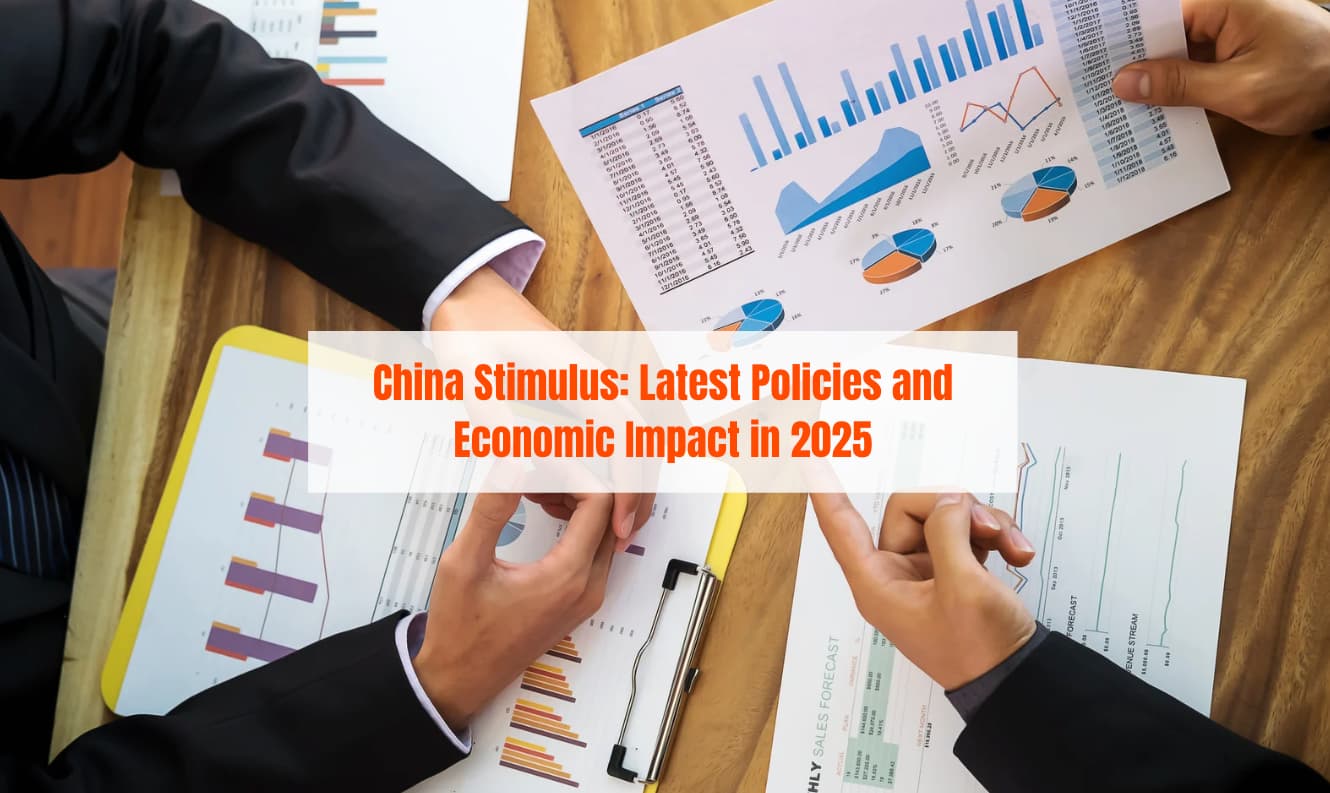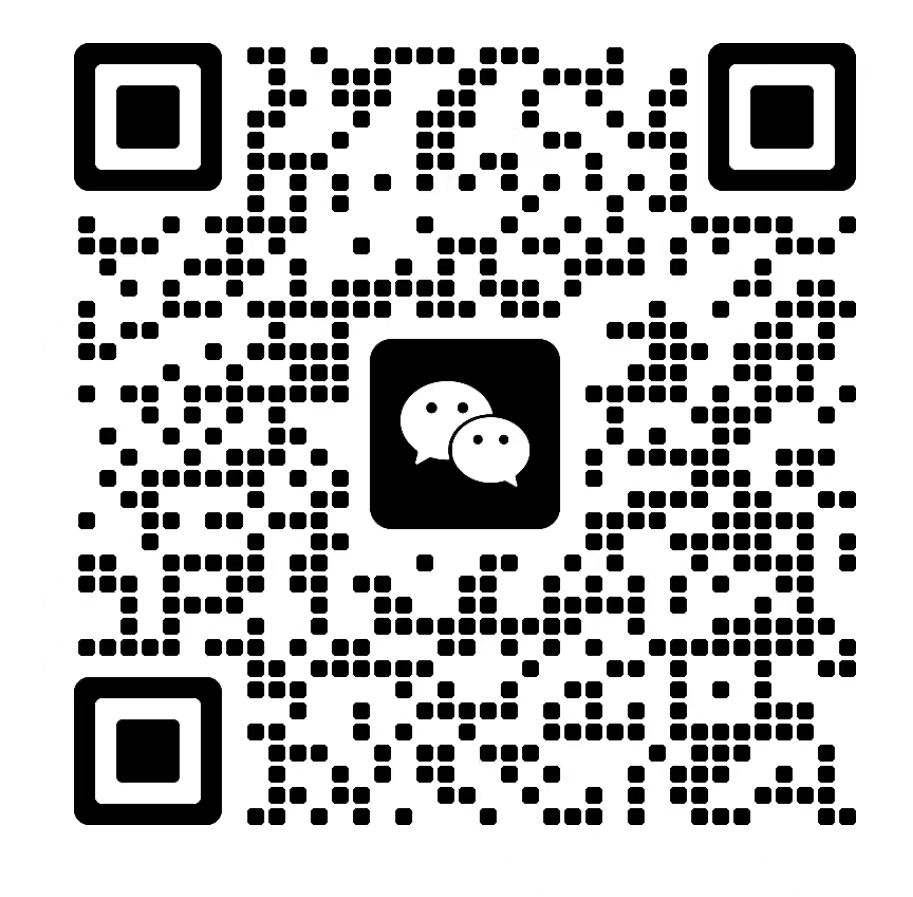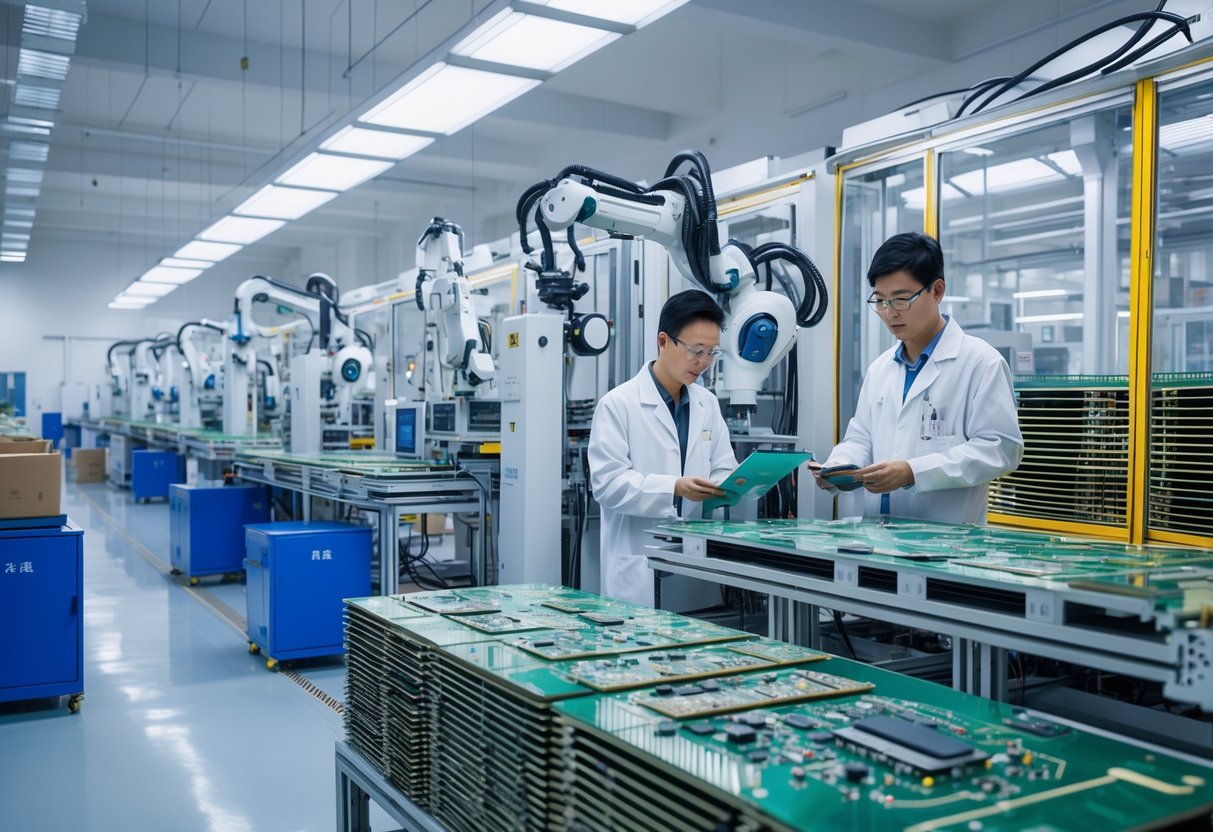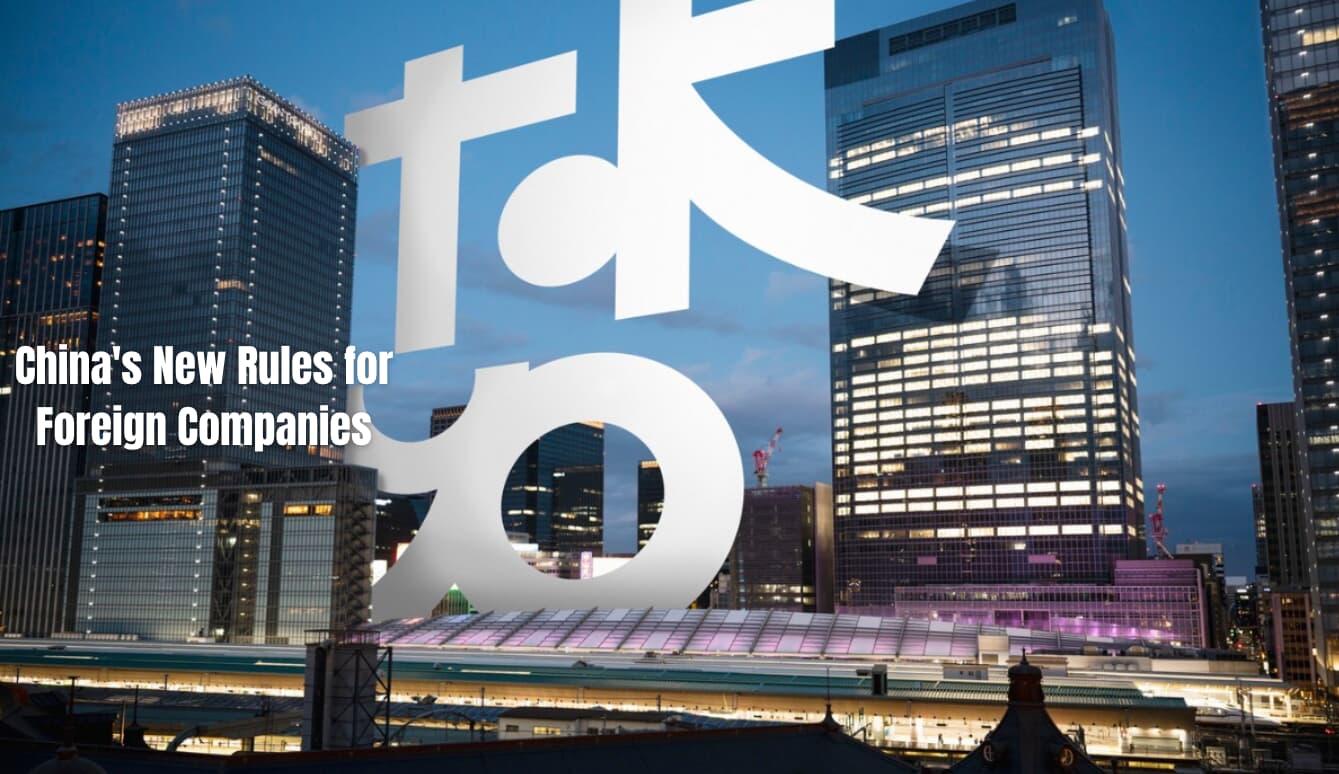China is launching major economic support measures to boost its slowing economy. The China stimulus includes everything from trade-in programs for cars and appliances to lower interest rates and housing support policies. These moves aim to get people spending again and help businesses grow.
Do these policies actually work? The Chinese government is using both old and new tools to fight economic problems like falling prices and weak consumer demand. Some measures target specific industries while others try to boost overall economic activity.
Understanding China's stimulus matters because it affects global markets and trade. The policies cover monetary changes, fiscal spending, and sector-specific support that could reshape how China's economy performs in the coming years.
Quick Takeaways ⚡:
- Latest China stimulus actions include consumer loan interest subsidies and trade-in schemes.
- The 2024 trade-in program lifted retail growth by over 1 percentage point.
- The government now subsidizes up to 1 ppt interest on small consumer and service industry loans.
- Broader monetary and fiscal stimulus includes bond issuance, rate cuts, and liquidity support.
- Long-term challenges: weak consumer confidence, fragile demand, and overreliance on investment.
📌Also Read: China Property Tax: Implications and Economic Impact
What Is the "China Stimulus"?
The "China stimulus" refers to government actions designed to boost economic growth when the economy slows down. China uses both fiscal stimulus (government spending and tax cuts) and monetary stimulus (lowering interest rates and increasing money supply).
These stimulus measures have three main goals:
- Revive consumption - Get people spending money again
- Stabilize markets - Keep stock and bond markets from crashing
- Combat deflation - Prevent prices from falling too much
Stimulus History Snapshot
China has launched major stimulus packages during two key periods. The first came during the 2008-2009 global financial crisis.
The four trillion yuan stimulus package was worth about 16% of China's yearly GDP at the time. This massive spending helped China avoid a deep recession when other countries struggled.
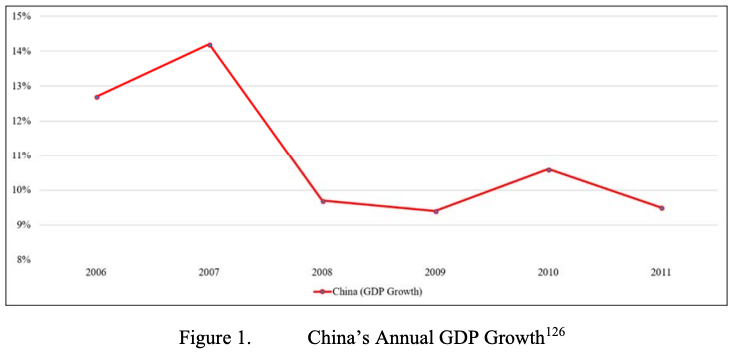
The package included large government investments in infrastructure projects across China. It also provided social transfers and funding for various economic programs.
China launched new stimulus efforts in 2024-2025. These programs respond to a slumping property market and weak consumer demand.
The recent measures aim to cushion falling profits and support economic growth during challenging times.
📌Also Read: List of Major Banks in China: A Full Guide
Major Components of the Current Stimulus
China's latest stimulus package uses four main tools to boost economic growth. These include programs to help people buy new products, cheaper loans for consumers and businesses, easier money policies from the central bank, and new government spending through special bonds.
Trade-In Schemes
Trade-in programs help you replace old items with new ones at lower costs. The government gives money back when you trade in old cars, home appliances, and electronics.
These programs focus on durable goods that last for years. Cars get the most considerable support, with rebates for electric and fuel-efficient models.
Home appliances like refrigerators and washing machines also qualify. You can get cash back when you buy energy-efficient models to replace older ones.
The programs raised retail sales by over 1 percentage point in 2024. They help manufacturers sell more products while encouraging people to buy newer, better items.
Key eligible items:
- Electric and hybrid vehicles
- Energy-efficient appliances
- Smartphones and computers
- Air conditioners and water heaters
Loan Interest Subsidies
The government makes loans cheaper by paying part of the interest costs. You can get 1 percentage point off loan rates for amounts up to 50,000 yuan.
Service businesses get similar deals on larger loans. The central government covers 90% of the subsidy costs. Local governments pay the remaining 10%.
These subsidies work for personal loans, business loans, and some mortgages. Banks still decide whether you qualify for the loan.
The program helps people afford big purchases they might otherwise delay. Small businesses can borrow money more cheaply to grow or stay open.
How it works:
- Apply for eligible loans at participating banks
- The government automatically reduces your interest rate
- Subsidy gets paid directly to the bank
- You make lower monthly payments
Monetary Easing & Liquidity
China's central bank uses several tools to put more money into the economy. Reserve requirement ratio cuts let banks lend more of their deposits.
Interest rate cuts make borrowing cheaper across the board. The central bank also injects cash directly into the banking system through various programs.
Property sector support includes easier lending rules for developers and homebuyers. Credit allocation during economic stimulus shows how banks direct more money to priority sectors.
Stock market funding helps boost investment. The central bank provides money that can flow into equity markets through various channels.
Main policy tools:
- Reserve requirement cuts: Banks can lend more money
- Rate reductions: Lower costs for all borrowers
- Liquidity injections: Direct cash to banks
- Sector support: Targeted help for real estate and stocks
Fiscal Tools & Debt Measures
The government issues special treasury bonds to fund stimulus spending. These bonds raise money for infrastructure projects and public services without using regular budget funds.
Local government debt gets restructured to reduce payment burdens. Cities and provinces can refinance expensive debt with cheaper bonds backed by Beijing.
China's fiscal stimulus composition shows how investment flows primarily to infrastructure while also supporting industry.
Long-term growth projects get priority funding. This includes schools, hospitals, transportation systems, and green energy infrastructure.
Spending priorities:
- High-speed rail and subway systems
- Renewable energy projects
- Healthcare facility upgrades
- Digital infrastructure and 5G networks
- Environmental cleanup programs
The debt measures help local governments avoid financial stress while maintaining public services. Special bonds enable the central government to direct funds to specific economic objectives.
📌Also Read: China Bankruptcy Law: Key Regulations, Procedures & Requirements for Filing
Monetary Tools and Policy Actions
China's central bank uses three main tools to stimulate the economy during downturns. The People's Bank of China adjusts reserve requirements, modifies interest rates, and provides direct liquidity support to banks and financial institutions.
Reserve Requirement Ratio Adjustments
The reserve requirement ratio is one of China's most powerful monetary tools. Banks must keep a certain percentage of their deposits with the central bank as reserves.
When the People's Bank of China cuts the reserve requirement ratio, it frees up money for banks to lend. A typical cut of 0.5 percentage points can release hundreds of billions of yuan into the banking system.
China's monetary policy implements multiple instruments to control economic activity. The reserve ratio works differently than interest rate tools because it directly controls how much money banks can lend.
Recent stimulus packages have included several reserve ratio cuts. These cuts help banks increase lending to businesses and consumers during economic slowdowns.
Interest Rate Modifications
China uses various interest rates as policy tools. The 7-day repo rate is a key benchmark that affects borrowing costs across the economy.
Both the reserve ratio and the 7-day repo rate affect China's nonfinancial sectors through credit channels. When rates fall, businesses find it cheaper to borrow money for expansion and investment.
The People's Bank of China also adjusts the medium-term lending facility rate. This rate influences how much banks pay to borrow from the central bank.
Lower interest rates make loans more attractive to businesses and consumers. You see increased investment in manufacturing, real estate, and consumer spending when borrowing becomes cheaper.
Liquidity Support Programs
China's central bank provides direct funding to banks through various programs. These programs ensure banks have enough money to keep lending during tough economic times.
The Chinese authorities inject huge amounts of liquidity into the banking system as part of stimulus programs. Recent packages have included over 1 trillion yuan in various forms of support.
The central bank offers special lending facilities to banks. These programs target specific sectors like small businesses or green energy projects.
Key liquidity tools include:
- Medium-term lending facility
- Standing lending facility
- Pledged supplementary lending
Banks can access these programs when they need extra funding. The programs help maintain steady credit flow even when economic conditions become difficult.
📌Also Read: China Banking and Insurance Regulatory Commission Explained
Is It Working?
China's recent stimulus measures show mixed results, with some quick gains in markets and retail activity but deeper economic problems still unresolved. The effectiveness varies significantly between immediate market responses and longer-term structural issues.
Short-Term Wins
👉 Market Response: Equity markets jumped when China announced its proactive stimulus approach. Investors responded positively to the government's commitment to boost economic growth.
👉 Retail Activity Boost: Trade-in programs and loan subsidies created immediate improvements in consumer spending. These schemes helped boost retail sales in key sectors.
You can see the impact most clearly in consumer goods markets. Car trade-in programs encouraged people to buy new vehicles. Home appliance subsidies drove sales higher than expected.
👉 Sentiment Improvement: Market confidence improved after the stimulus announcement. Both businesses and consumers showed more optimism about economic prospects.
The stimulus package had a remarkable impact on the labor market in previous rounds. Early signs suggest similar patterns emerging with current measures.
Structural Challenges
👉 Weak Consumer Demand: Despite short-term gains, consumption remains fragile across many sectors. Chinese households continue to save more and spend less than the government targets.
Property sector problems still weigh on consumer confidence. Many families feel less wealthy due to falling home values.
👉 Fading Momentum Risk: Economists warn that stimulus gains may not last through the second half of 2025. The boost from government spending could fade without sustained private sector growth.
👉 Persistent Underlying Issues: Three major problems continue despite stimulus efforts:
- Low confidence among consumers and businesses
- Industrial overcapacity in key manufacturing sectors
- Property sector difficulties affecting household wealth
The effectiveness of macro-stimulus in China depends on state-owned enterprises responding to government signals. This approach may not address deeper structural imbalances.
Recovery in domestic demand remains slow and uneven. Manufacturing output responds faster than consumer spending to government measures.
Future Outlook for China Stimulus
China's stimulus future depends on balancing immediate economic needs with long-term stability concerns. The government faces pressure to maintain growth while managing rising debt levels and external trade challenges.
What's Next?
You can expect China to continue expanding its current stimulus programs in the coming months. The government will likely expand trade-in programs to include more items beyond cars and appliances.
Key upcoming measures include:
- Extended subsidies for consumer purchases
- Expanded trade-in programs for electronics and furniture
- Additional loan support for businesses and homebuyers
- More infrastructure spending in central and western regions
Monetary policy will stay loose to support growth. You'll see continued interest rate cuts and easier lending rules for banks. China's state-driven economic model gives officials more control over stimulus timing and size.
Local governments will receive assistance in restructuring their substantial debt loads. This debt relief will free up money for new spending projects.
Future stimulus execution will shift more toward direct government spending rather than bank lending. This change aims to target help where it's needed most.
Risks & Considerations
Consumer confidence remains weak despite government efforts. Many Chinese families still prefer saving over spending due to job worries and housing market concerns.
Major risks facing stimulus effectiveness
- Debt burden: Local government debt has grown too high, limiting new spending power
- Consumer hesitation: People aren't spending even with incentives available
- Trade tensions: Export demand could drop if trade conflicts worsen
- Global slowdown: Weaker world growth reduces demand for Chinese goods
Local finances are already strained from previous stimulus rounds. Many cities and provinces have little room for additional borrowing or spending.
External pressures add uncertainty to any stimulus plans. Trade disputes and global economic weakness could force China to spend more just to maintain current growth levels.
Investment in education and research has been limited in recent stimulus packages. This could hurt China's long-term growth potential even if short-term targets are met.
Conclusion
China’s stimulus, spanning trade‑ins, loan subsidies, rate cuts, and fiscal tools, is gradually spurring consumer spending and market sentiment.
While short-term gains are visible, deep-rooted problems like weak confidence and structural imbalances remain.
The effectiveness of these measures will hinge on lasting reforms, consumer trust, and nimble policymaking.
For China's stimulus to truly succeed, it needs to empower households, not just prop up markets. Sustainable growth demands restoring confidence as much as deploying cash.
❝Facing legal or business hurdles tied to China’s evolving economy? Contact Choi & Partners for trusted legal guidance. Get in touch →❞
FAQs About China Stimulus
China's economic support measures include massive government spending programs, loan subsidies, and consumer trade-in incentives. These policies aim to boost domestic demand and maintain economic growth amid global challenges.
What exactly is "China stimulus"?
China stimulus refers to large-scale government spending and policy measures designed to boost economic growth. The Chinese government implements stimulus programs of substantial magnitude during economic downturns.
These programs typically include infrastructure investment, tax cuts, and monetary policy changes. The government directs funds toward construction projects, manufacturing, and consumer spending support.
China's stimulus differs from other countries because the government has more direct control over banks and state-owned companies. This allows for faster implementation of economic policies.
What are China's current stimulus measures?
Current measures focus heavily on consumer incentives and loan support programs. The government launched trade-in schemes for cars, appliances, and electronics to encourage household spending.
Banks offer subsidized loan rates for home purchases and business investments. Local governments receive additional funding for infrastructure projects and public works.
The People's Bank of China has cut interest rates multiple times. Reserve requirement ratios for banks were also reduced to increase lending capacity.
Did the trade-in scheme really work?
The trade-in programs showed mixed results across different product categories. Car sales increased significantly in cities where consumers received cash rebates for trading old vehicles.
Appliance trade-ins performed better in rural areas than urban centers. Many consumers used the subsidies to upgrade refrigerators, washing machines, and air conditioners.
Electronics trade-ins faced challenges with verification processes. Some retailers reported delays in processing government rebates, which slowed consumer participation.
Are the loan interest subsidies making a difference?
Housing market activity increased in several major cities after subsidy announcements. First-time homebuyers particularly benefited from reduced mortgage rates and down payment requirements.
Small business lending grew by double digits in recent quarters. Manufacturing companies used subsidized loans to expand production capacity and purchase equipment.
However, many consumers remain cautious about taking on new debt. Economic uncertainty continues to affect spending decisions despite lower borrowing costs.
Will these policies deliver long-term growth?
Short-term economic indicators show positive responses to stimulus measures. GDP growth stabilized, and unemployment rates improved in key industrial regions.
Long-term effectiveness depends on structural economic reforms beyond spending programs. Growth pressures and stimulus plans create complex dynamics that affect foreign investment and domestic competition.
Debt levels from stimulus spending may constrain future policy options. The government must balance immediate growth needs with fiscal sustainability concerns.
Subscribe to receive updates
Subscribe to receive the latest blog posts to your inbox every week.


